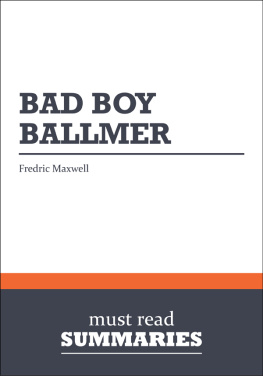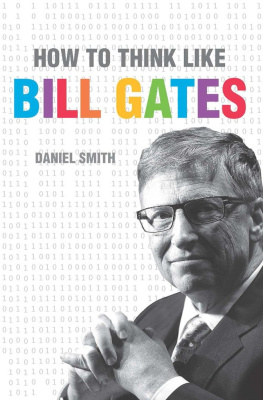Eighth chapter
What have been the keys to AOLs success?
- AOL has managed to survive the ups and downs of the business world because it is middle of the road rather than cutting edge. AOL sites will never win any design awards, but they are clean and easy to navigate. Its chat groups focus on mundane things that actually match the lives of most people.
- AOL has won because Steve Case has a vision for the business, and keeps it tracking towards that goal.
- AOL has, at times, taken bet the company risks at critical times. Some investors would consider AOLs aggressive accounting and marketing policies as unnecessarily risky. Yet those same people are pleased when those bets come off and the share price rises correspondingly.
- AOL has done whatever was required to survive. When the online games company concept didnt pan out, it went into private-label online services for computer manufacturers. It offered a proprietary service when the open infrastructure offered by the Internet was growing quickly. It moved to a flat rate pricing scheme and then totally frustrated its members with technical snafus. It has lived up to its reputation as the cockroach of the online world. And AOL will doubtless continue to evolve and change in the future.
- AOLs success was helped at various times as much by the incompetence of their competitors than by anything brilliant AOL did.
So where does AOL go from here? Most people assume one of three potential scenarios will play out:
- AOL will go bankrupt and just fade away.
- AOL will be bought out by a larger company, probably a media company wanting to get into online commerce.
- AOL will emerge as the most important company in cyberspace.
While it is impossible to forecast which of these scenarios will eventually be played out, identifying the challenges currently faced by AOL are much easier:
- Microsoft has regrouped and re-launched its Microsoft Network to compete against AOL for online consumers.
- Microsoft and other companies are making sizable investments in the merger of PCs and televisions to provide a broad range on interactive services. How AOL will meet such a challenge if it does eventuate is uncertain.
- The increasing popularity of the popular Internet portal sites such as Yahoo!, Excite, Start, Snap and @home are busily adding features that will compete against AOL.
- The Web is emerging as a more varied and vibrant online destination than AOL.
- Internet service providers may be well positioned to challenge AOL at some future time.
- Unsolicited commercial e-mail or spam (which by some estimates accounts for up to one-third of all current e-mail) may cause problems in the future.
- Hackers love the challenge of breaking into AOLs system and stealing passwords, altering graphics and intruding into unauthorized areas.
- The AOL network continues to strain under the number of users, and busy signals frequently greet members as they try to log on to AOL.
- Federal regulations increasing AOLs fiscal liability for transmitting questionable material through its system may yet be enacted and enforced.
- The issue of online privacy is attracting considerable attention, and will need to be addressed in the future.
In the meantime, however, AOL is flourishing. In 1997:
- 2.9 million new members joined AOL
- AOLs brand awareness was more than 4-times that of its nearest competitors
- Commerce and advertising revenue streams have continued to rise
- AOLs management team is now widely considered to be the best in the industry
- AOLs share price moved closer to the $100 mark (and actually reached $120 in March 1998)
In February 1998, AOL even increased its flat rate charge from $19.95 a month to $21.95 per month.
For the second quarter of 1998, AOL passed the 11 million member mark and announced revenues of $592 million, with a profit of $20.8 million.
Case does not want to celebrate now, because theres still many more innings to play -- were perhaps at the bottom of the second or the third he says. This is a marathon, not a sprint, he noted. It takes 10 to 20 years to build a mass market, he insisted it doesnt just happen overnight.
--Kara Swisher
When people ask me how or why I did it, its like asking a basketball player, "Why do you play basketball?" Probably because you want to be the best. So I never did mind the focus on my imminent demise, because the facts are on my side. And the fact is that the dust settled and I am still standing, and that pretty much says it all. I learn a lot from history, because no one thought much of AOL and here we are. So I exaggerate the risks and diminish our advantages.
--Steve Case
And for the future? Well see, wont we.
--Steve Case

First chapter
In 1975, Bill Von Meister, a Washington based telecommunications entrepreneur and Alan Peyser started a company which they called TDX Systems Inc. TDX was in the process of developing a new technology for low cost routing of long distance telephone calls. Von Meister later lost control of the company, which, after being renamed Cable & Wireless PLC, rose to have annual revenues of more than $1 billion.
Being at somewhat of a loose end, Von Meister noticed that Compu-Serve and a number of other new companies were focusing on delivering information to business customers, and thought that a home information utility using the low-cost telephone routing technology hed helped develop at TDX would be a good idea. He called the new company The Source and formed a partnership with Jack Taub, a Washington investor. That deal also went badly, and after burning through all their start-up capital, Taub ousted Von Meister and sued him for mismanagement.
Bill Von Meister next worked on a project called The Home Music Store, which proposed beaming studio-quality music via satellite and cable line to homes. One of the staff members he hired on this project was a programmer called Marc Seriff, who had worked on the government funded APRANET which was the precursor to the Internet. The Home Music Store concept failed when the major record companies refused to support the idea.
Von Meister then thought he could adapt the concept to deliver video games to homes rather than music. Bill Von Meister was ultimately able to interest a venture capitalist, a banks investment company, an investment banker and the founder of a computer games company to put up $100,000 each and in late 1982, Control Video Corporation (CVC) was formed to develop a video game delivery system for Atari computers.
By the 1983 Consumer Electronics Show in Las Vegas, CVC had developed the prototype of a new device called a GameLine Master Module by which video games could be delivered to consumers. This generated loads of interest at the show - both from potential customers and from venture capitalists. CVC looked to have a bright future as funding for the consumer release of the GameLine service was arranged. The only problem was timing -- unbeknown to CVC, the video game industry was just about to go cold, with Atari announcing huge losses and dozens of video game developers going out of business.
As a result, after burning through all of the available funding of $9 million, Bill Von Meister again lost control over a company he had founded as the major shareholders installed James Kimsey (one of CVCs minority stockholders) as a replacement CEO and fired all but 12 employees. Fortunately, however, one of the CVC employees who kept his job at that time was Stephen Case, who was the brother of the investment banker who had provided $100,000 of the original seed capital. Stephen Case was initially employed in the marketing department of CVC.




















